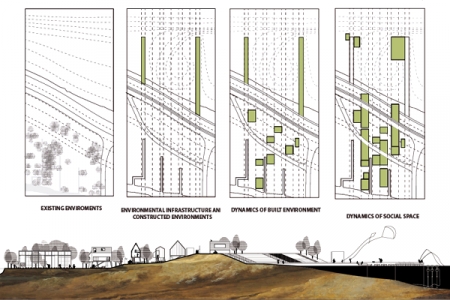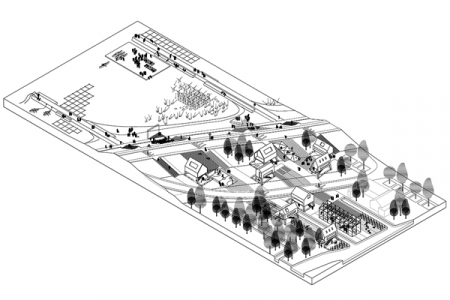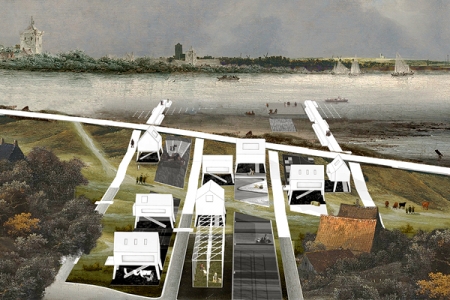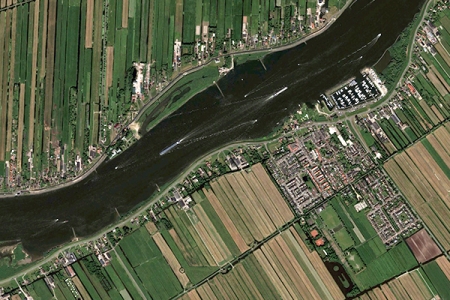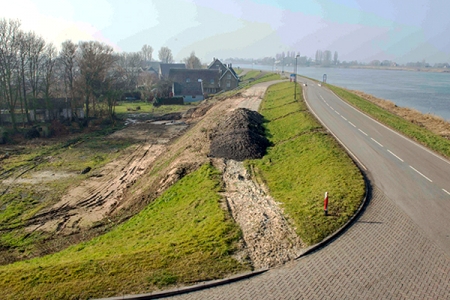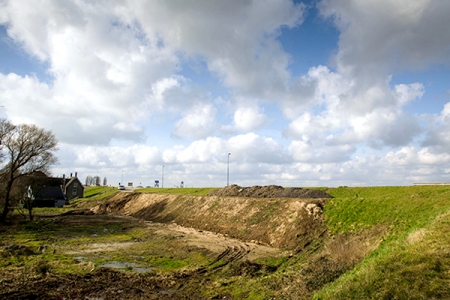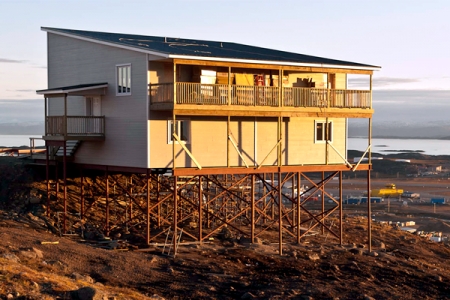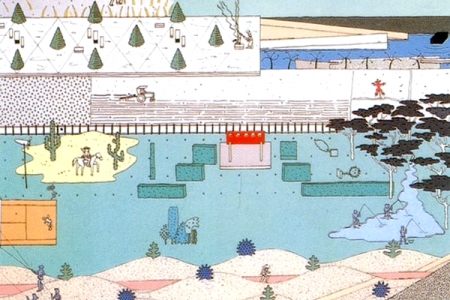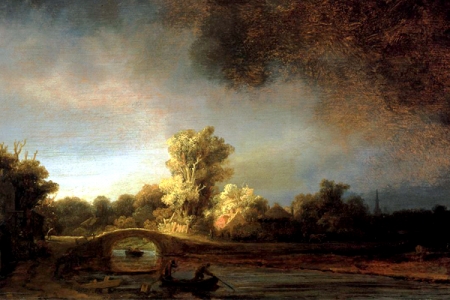Protodike
Streefkerk (NL) – Mentionné
DONNÉES DE L’ÉQUIPE
Représentant d'équipe : Carlos Zarco Sanz (ES) – architecte ; Associée : Sara Palomar Pérez (ES) – architecte
Collaborateurs : Jose Luis Hidalgo Loma-Ossorio (ES), Zuhal Kol (TR) – architectes
openact architecture, Joaquin Costa 4, 3ºB, San Lorenzo del Escorial, 28200 Madrid – España
+34 91 890 4258 – info@openact.eu – www.openact.eu
Voir la liste complète des portraits ici
Voir la page du site ici

S. Palomar Pérez, J. L. Hidalgo Loma-Ossorio, C. Zarco Sanz & Z. Kol
INTERVIEW en anglais
Cliquer sur les images pour les agrandir
1. How did you form the team for the competition?
We have a young studio named OpenAct within which we focus on the research of open-ended systems as the basis for adaptable, flexible and organic infrastructures, across a multitude of scales that support and promote contemporary urban life. Thus, for us, the Europan competition theme was the ideal ground to expand our research into actual projects with actual sites and problems.
2. How do you define the main issue of your project, and how did you answer on this session main topic: Adaptability through Self-Organization, Sharing and/or Project (Process)?
In Streefkerk, the boundary created by the dike is predominant and eliminates potential mutuality of water and land. Therefore, the proposal focuses on the reciprocal programmatic, economic, ecologic, socio-cultural relationships between land and water by asking “how can an infrastructure to block be developed to connect”, and aims to utilize the resultant conversation central to organizing a prototype –PROTODIKE– infrastructure of an alternate urbanism and land use which can be adapted and implemented in varying locations for dike reinforcements in the Dutch Delta.
3. How did this issue and the questions raised by the site mutation meet?
The town, the agricultural landscape and the aquatic landscape of Lek River surround the site in Streefkerk; it is based on a land-use that grows perpendicular to the dike, but it is interrupted by the dike and isolated from the river. Extending from the land to the water, “Protodike” offers a new encounter with water to its inhabitants by decreasing the ‘boundary’ effect of the dike and encouraging programs on/around the water, creating and triggering plots of encounters between water and land to conceive dynamic coexistence of diverse activities.
4. Have you treated this issue previously? What were the reference projects that inspired yours?
Our research focuses on a new role and relevancy for the architect who is confronted with an increasingly unpredictable globe and contingent city; therefore, adaptability is one of our main concerns. OMA’s Parc de la Villette was one of the inspiring reference projects in terms of developing design mechanisms responding to indeterminate conditions of urban contexts, and thus, adaptability. Another reference that assisted to develop the idea was Rembrandt’s landscape paintings depicting Dutch Delta more in relation to water when the dikes were less of a boundary than they are today. Also, stilt housing in Arctic Canada generated the base for us to define a housing typology to live by the dike.
5. Today –at the era of economic crisis and sustainability– the urban-architectural project should reconsider its production method in time; how did you integrate this issue in your project?
As we were familiar with the current planned dike reinforcement processes that spread on an almost 70 years time period, we proposed phasing as another design input within the implementation of the project for the site in Streefkerk. Interpreting the infrastructural development of the dike programmatically, the proposed phasing of the project aimed to experiment and force the potentials of the known dike infrastructure as a means of investigating new spatial circumstances according to the changes over time.
6. Is it the first time you have been awarded a prize at Europan? How could this help you in your professional career?
This was our first Europan experience and prize. We are very honored to become a part of such a widely-known organization and hope to be included in the realization processes of the project as well. Therefore, we believe that it is also a great opportunity and encouragement for us to expand the scope of our studio.
